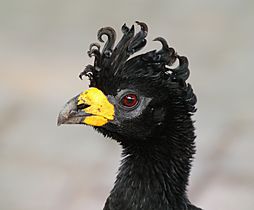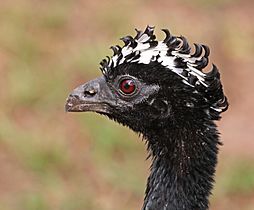Bare-faced curassow facts for kids
Quick facts for kids Bare-faced curassow |
|
|---|---|
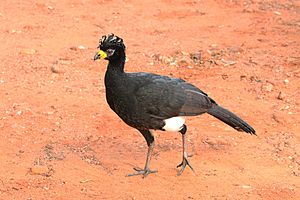 |
|
| Male | |
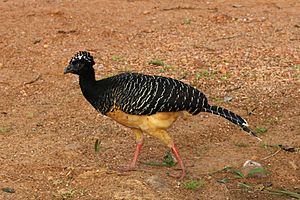 |
|
| Female Both in the Pantanal, Brazil |
|
| Conservation status | |
| Scientific classification | |
| Genus: |
Crax
|
| Species: |
fasciolata
|
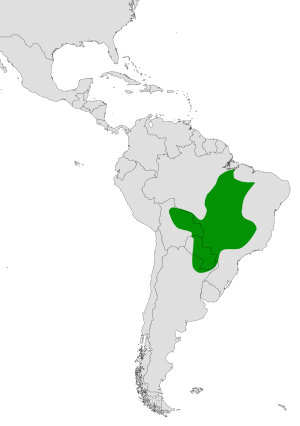 |
|
The bare-faced curassow (scientific name: Crax fasciolata) is a large, beautiful bird. It belongs to a family of birds called Cracidae, which includes chachalacas, guans, and other curassows. You can find this bird in parts of Brazil, Paraguay, Bolivia, and Argentina. It loves to live in warm places like dry forests, moist lowland forests, and areas like the Pantanal and cerrado.
Contents
What Are Its Relatives?
Scientists group living things into different categories. The bare-faced curassow has different types, called subspecies. Think of them like different breeds of dogs, but for birds! There are three main types of bare-faced curassows:
- C. f. fasciolata: This type lives in the lowlands of Brazil, Paraguay, and northeast Argentina.
- C. f. grayi: You can find this one in eastern Bolivia.
- C. f. pinima: This type lives in northeastern Brazil.
What Does It Look Like?
The bare-faced curassow is a big bird, usually growing to be about 82 to 92 centimeters (around 32 to 36 inches) long. Boys and girls of this bird look quite different! This is called sexual dimorphism.
Male Curassows
Male bare-faced curassows have mostly black feathers on their upper bodies. These feathers might look a bit shiny with a greenish-olive color. Their face has no feathers and looks yellowish. They also have a small black crest (a tuft of feathers) on their head. Their underparts are white.
Female Curassows
Female bare-faced curassows have a black head, throat, and neck. Their crest is black and white, with stripes. The rest of their upper body is greenish-black with white or yellowish-brown stripes. Their black tail has a white or yellowish-brown tip. Their underparts are black, with yellowish-brown stripes on their chest. The color gets lighter towards their belly. The skin on their face is dark, almost black.
How Does It Behave?
Bare-faced curassows like to live in moist forests, especially near the edges of woodlands. They mostly eat fruit, but they also enjoy seeds, flowers, and small invertebrates (like insects). When it's time to have babies, usually in the summer, they build their nests in trees. These nests are like platforms made of sticks.
Is It in Danger?
The bare-faced curassow lives in a wide area and there are many of them in some places. However, their numbers are going down quite quickly. This is because people hunt them, and their homes (forests) are being destroyed. Because of these threats, the International Union for Conservation of Nature says this bird is "vulnerable". This means it could become endangered if we don't protect it.
See also
 In Spanish: Muitú para niños
In Spanish: Muitú para niños



